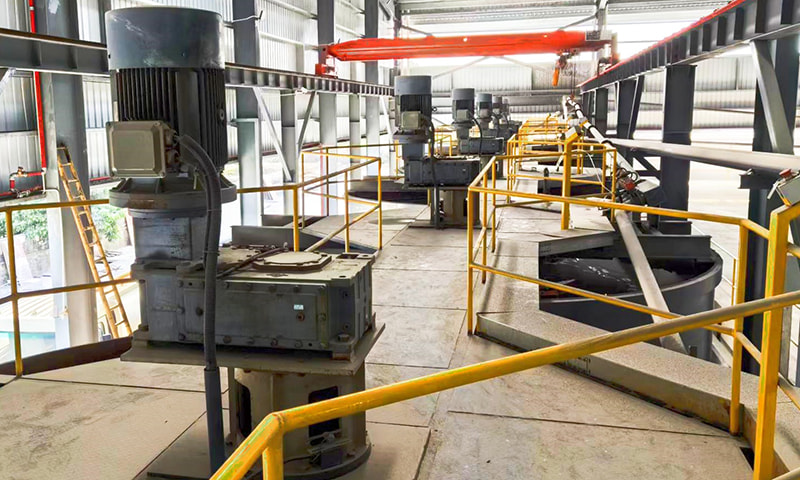As a metering device specifically for powdered materials, the special feature of powder scale is the fusion of the dual attributes of "container" and "metering". Traditional metering tools often separate the holding and weighing functions, while powder scale integrates the two into one. It can not only hold powder like a container, but also complete weighing simultaneously during the material pouring and subsequent mixing process. This immediacy and integrated design distinguish it from ordinary platform scales, balances or storage tanks. From a structural point of view, the core area of the powder scale is both a temporary storage space for materials and a sensing carrier for metering sensors. When the powder is poured in, there is no need to transfer it to other metering tools, and the scale body can capture the weight changes of the material in real time through the built-in sensor. This design simplifies the operation process, reduces the problems of residue and flying that may occur during the material transfer process, and thus improves the metering accuracy. In view of the characteristics of powder that is easy to agglomerate and has large differences in fluidity, the container is usually equipped with a stirring device to maintain the continuity of measurement during the mixing process.
Automatic weighing logic
The automatic weighing function of the powder scale is not a simple weight reading, but a dynamic response system based on material characteristics. Its working logic starts from the moment the material is poured in. When the powder contacts the scale container, the sensor will immediately start weight monitoring and make real-time adjustments according to the preset threshold. In the mixing process, the implementation of the automatic weighing function is more technically challenging. The operation of the mixing device will generate vibration, which may interfere with the sensitivity of the sensor. The powder scale uses a special shock-absorbing structure and signal filtering algorithm to minimize the impact of mechanical vibration on weight detection. During the mixing process, the sensor continuously collects weight data and eliminates the interference signal generated by vibration through software algorithms to ensure the stability of the weighing results. This ability to maintain measurement accuracy under dynamic conditions is the core advantage of its automatic weighing logic and a key feature that distinguishes it from static metering equipment.
Design considerations
The design of the powder scale needs to balance the three major elements of functionality, safety and adaptability. In terms of functionality, it is necessary to ensure that the weighing range and accuracy meet the requirements of the application scenario. When designing, it is necessary to select the appropriate sensor type and range parameters according to the material characteristics of the target industry. Safety design is mainly aimed at the physical and chemical properties of powders. For corrosive powders, the inner wall of the container needs to be made of acid-resistant and alkali-resistant materials; for flammable and explosive powders, it needs to have anti-static and explosion-proof functions. Sealing performance is also a design focus. Good sealing can prevent powder leakage from causing environmental pollution or health risks to operators, while avoiding the influence of external humidity and dust on material purity and metering accuracy. Adaptive design is reflected in the compatibility with different powder fluidity. Powders with strong fluidity are prone to "splashing", and powders with poor fluidity are prone to agglomeration in the container. Therefore, the inclination angle of the scale container, the smoothness of the inner wall, the speed of the stirring device, the shape of the paddles, etc., all need to be customized according to the flow characteristics of typical materials to ensure the smoothness of the weighing process.
The synergistic mechanism of mixing and weighing of powder scales
The main purpose of mixing is to eliminate powder agglomeration and make the material composition uniform. This process must be carried out simultaneously with weighing, otherwise it will cause metering interruption and affect production efficiency. In order to achieve synergy, the equipment needs to solve two key problems: non-interference between mechanical movement and metering signals, and metering compensation for changes in material state during mixing. In terms of mechanical structure, the stirring device and the scale container are flexibly connected, and the installation position of the stirring motor avoids the sensitive area of the sensor to reduce vibration transmission. The sampling frequency of the sensor is set to be much higher than the vibration frequency of the stirring device. Through rapid data collection and averaging processing, periodic vibration interference is filtered out. At the software level, the system will establish a baseline based on the weight data before and after the stirring is started. When a small amount of material adheres to the stirring blade during the stirring process, the algorithm will automatically compensate for this part of the "hidden weight" to ensure the accuracy of the final measurement result.
-
Purpose: The ball mill is the main equipment for grinding and mixing raw materia...
-
Purpose: Ball mill is the main equipment for grinding and mixing raw materials i...
-
Function: Use for storage slurry after ball mill or waste slurry Model: 8m³、10m³...






